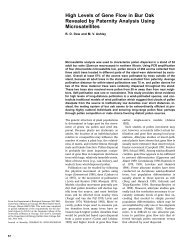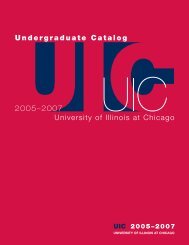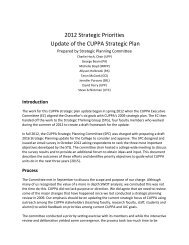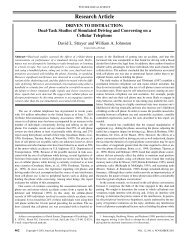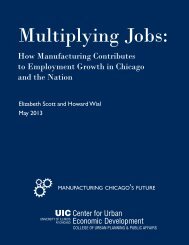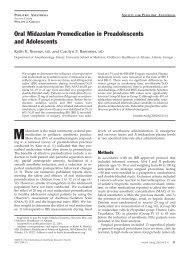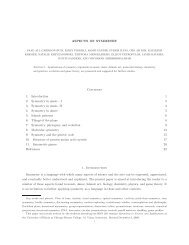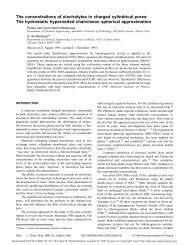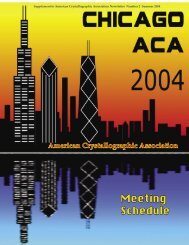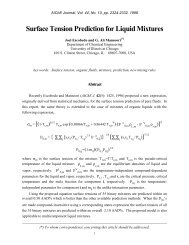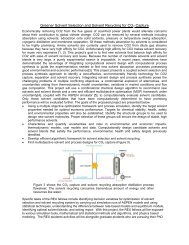Sustainable Transportation and Grounds in UIC - University of ...
Sustainable Transportation and Grounds in UIC - University of ...
Sustainable Transportation and Grounds in UIC - University of ...
You also want an ePaper? Increase the reach of your titles
YUMPU automatically turns print PDFs into web optimized ePapers that Google loves.
Report to <strong>UIC</strong> 33 Chancellor’s Committee on Susta<strong>in</strong>ability <strong>and</strong> Energy<br />
• Overall, there are enough ‘spatially clustered’ groups <strong>of</strong> faculty<br />
<strong>and</strong> staff to whom transit is not available. Employees <strong>in</strong> these<br />
spatially clustered groups may be better served with express<br />
buses, vanpools, carpools <strong>and</strong> other high occupancy modes.<br />
• Almost 20% <strong>of</strong> <strong>UIC</strong> students live with<strong>in</strong> 2 miles <strong>of</strong> campus <strong>and</strong><br />
about 35% live with<strong>in</strong> 5 miles. In FY2007, 3,109 students<br />
resided <strong>in</strong> campus hous<strong>in</strong>g <strong>in</strong> the east, south or west sides.<br />
• Close to 90% <strong>of</strong> <strong>UIC</strong> students have a valid driver’s license <strong>and</strong><br />
about 72% have a private vehicle available to them.<br />
• More than 60% <strong>of</strong> <strong>UIC</strong> U-PASS users are ‘moderate <strong>in</strong>tensity<br />
users’ who ride the transit system between 32 <strong>and</strong> 106 times<br />
per semester. About 18% are ‘high <strong>in</strong>tensity users’ who ride<br />
the system 106 times per semester. Only 5% <strong>of</strong> U-PASS<br />
holders are non-users (never used the transit system at all<br />
dur<strong>in</strong>g a semester).<br />
• There has been a 230% decrease <strong>in</strong> park<strong>in</strong>g permits issued to<br />
students s<strong>in</strong>ce the implementation <strong>of</strong> the U-PASS. There has<br />
been a 38% decrease among non-academic employee park<strong>in</strong>g<br />
permits on the east side, whereas on the while there has been<br />
a slight <strong>in</strong>crease on the west side.<br />
• Daily park<strong>in</strong>g utilization is approximately 64% (81% west<br />
campus, 50% east campus). The medical community park<strong>in</strong>g<br />
needs affords the university opportunity to allocate park<strong>in</strong>g<br />
space more efficiently. Special events on campus can<br />
generate 100% park<strong>in</strong>g lot utilization <strong>in</strong> the park<strong>in</strong>g areas close<br />
to the venue.<br />
• The number <strong>of</strong> academic participants <strong>in</strong> the transit benefit<br />
program has <strong>in</strong>creased 233% while the number <strong>of</strong> nonacademic<br />
participants has <strong>in</strong>creased only 26%.<br />
• In terms <strong>of</strong> schedules, staff <strong>and</strong> part-time students have the<br />
most predictable schedules. Faculty members tend to be on<br />
campus dur<strong>in</strong>g the bus<strong>in</strong>ess day with a somewhat varied<br />
schedule, while full-time students have the greatest schedule<br />
variety, with more than 25% stat<strong>in</strong>g that their schedules vary<br />
considerably.<br />
STARS St<strong>and</strong>ards<br />
• Currently, the <strong>in</strong>stitution’s motorized fleet emits 0.2 carbon<br />
dioxide equivalent (CO 2 e) per passenger mile traveled,<br />
achiev<strong>in</strong>g one po<strong>in</strong>t. We could achieve 2 po<strong>in</strong>ts by hav<strong>in</strong>g no<br />
CO 2 e per passenger mile traveled (carbon neutral fleet).<br />
• Another credit is given for hav<strong>in</strong>g a specified percentage <strong>of</strong> the<br />
<strong>in</strong>stitution's faculty, staff, <strong>and</strong> students gett<strong>in</strong>g to <strong>and</strong> from<br />
campus by a means other than s<strong>in</strong>gle occupancy vehicle for<br />
the majority <strong>of</strong> their daily trips. Alternatives to s<strong>in</strong>gleoccupancy<br />
vehicle transportation <strong>in</strong>clude walk<strong>in</strong>g, bicycl<strong>in</strong>g,<br />
van or carpool<strong>in</strong>g, tak<strong>in</strong>g public transportation, or rid<strong>in</strong>g a<br />
33



